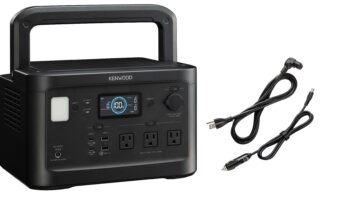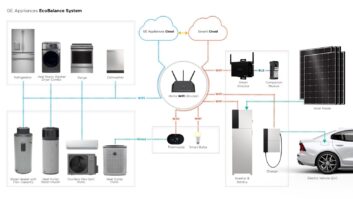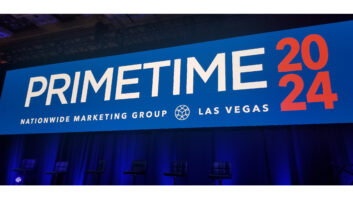Washington, D.C. – Representatives from the broadcasting, cable and consumer electronics industries agreed that consumer education to the digital television transition remains the largest remaining hurdle to its successful completion, and said they will continue to work cooperatively to meet the challenge.
Speaking during a panel discussion at the CEA Washington Forum here Monday, representatives from the Consumer Electronics Association, the National Association of Broadcasters, Public Television and the National Cable and Telecommunications Association (NCTA) said they are each jointly and individually working on projects now to alert consumers to the 2009 change, when analog TV broadcasts will end, leaving only digital signals for free over-the-air programming.
Although a federal coupon program is in place, several panelists feared that funding reserved to aid in reaching out to consumers is inadequate.
John Lawson, Association of Public Television Stations (APTS) president, said his association had conducted some polling of its own on digital television and found that over 60 percent of consumers “have no clue” about the digital television transition.
“You have maybe by our estimates 20 to 21 million households that rely exclusively upon over-the-air television to get their signals. They are not aware of the transition. They are not sure what to do about it and they certainly don’t know about the coupon program or the mechanics of it. There is time, but we need to make a big investment in consumer education to get this thing right,” Lawson said.
Lawson pointed out that Capitol Hill lawmakers only set aside $5 million for consumer education.
“This is an area where the government is taking an enormous risk with the transition,” Lawson said. “The government has an enormous stake in getting this thing right… but $5 million against the need to reach the kind of population you are talking about is grossly inadequate. We asked for $86 million.”
Lawson said Public Television stations will devote time and spectrum to promoting the transition on its stations, but more is needed. “Let’s do it right. You have to invest in getting the word out, in the marketing to make sure this transition is successful, otherwise you could run the risk of this becoming an issue in the 2008 presidential elections,” he said. “That is the danger of the hard date becoming a train wreck and being postponed.”
Kyle McSlarrow, NCTA president and CEO, said all broadcasters and multi-service operators have to engage in “a massive public service announcement campaign direct to the viewers on their television sets.”
He added that it hasn’t been decided when that would begin, how it would deliver the message or how much would run, but “a pretty large PSA effort has to be part of this mix.”
Gary Shapiro, Consumer Electronics Association president and CEO, questioned the need for more government funding to provide education, adding that “there is fear mongering going on, and frankly this is becoming a political issue. The Democrats are saying the Republicans didn’t give enough money and the Democrats are saying, ‘We need more money.’ ”
“It’s easy to go to government and say we need more money for something, but the question is, is it really needed?” Shapiro asked. “As long as we do our job and let everyone know what their options are… with the combined advertising of the manufacturers, retailers, broadcasters in their PSAs… if 99 percent of Americans don’t know about this transition two days before it occurs, then something is wrong.”
Marcellus W. Alexander Jr., NAB Television executive VP, agreed making the public aware of the transition and telling them what they need to do to continue receiving their signals are the top two priorities going forward for the digital transition. He pointed out that a multi-industry digital television transition coalition is now engaged in that effort.
Transition coalition members include the CEA, NAB, APTS, NCTA, Consumer Electronics Retailers Coalition, LG Electronics, MSTV, broadcast networks, and the Leadership Conference on Civil Rights.
To encourage consumers to act proactively to ensure they don’t lose their signals in February 2009, Lawson said, “consumers have to be made aware of the positive values” of digital television. For a one-time investment in a set-top box, they will be able to receive new channels they are not receiving now,” including new multicasts delivered by Public Television.
“Consumers have to see DTV as a benefit to them, as a value to them, and I think that will drive consumer purchases of new sets and set-top boxes, and it certainly will incent people who want to take advantage of the coupon program to go through the mechanics to actually access that,” Lawson said.
Alexander said NAB consumer surveys have found that the public safety benefit of the digital transition, in which radio frequency spectrum will be freed up for first-responders to emergencies, has “resonated” well consumers, “and that is part of the message that we are going to be crafting.”
Shapiro compared the digital transition to “going from the horse and buggy to the car.”
“The good news for us is that everyone who sees an HDTV wants one,” Shapiro said. “It’s not that difficult to sell one. But we’ve gotten together with other groups and are working together with a common mission… to make sure that everyone knows what their options are and that it is coming. The challenge is that it is only two years away. It is very difficult to get that passion and enthusiasm and break through the clutter of everything else.”
“We are also working together to talk about parental blocking technology and things like that, which are at the Washington forefront right now,” Shapiro said.
Shapiro lauded TV manufacturers for working together on standard terms and definitions to help make the task of communicating the technologies easier. He also praised the collaborative efforts of the multi-industry associations with making the process smoother than it could have been.
“Compared to every other country in the world in how we’ve advanced the ball and gotten a great system for this country and done it in a way where there’s cooperation between government and industry together, we’ve created a unique transmission system that works great,” Shapiro said.
The CEA, he said, will continue to play up the benefits of the clear pictures of HDTV and the immersive experience of surround sound to continue to encourage more consumers to adopt new digital televisions and stay ahead of the analog cutoff.
“The marketplace has shown that [consumers] want the wide set, the surround sound and the better picture that HDTV provides,” Shapiro said. “That’s not to say that there isn’t still some experimenting going on and some models are still being sold with less than HDTV resolution, but it is dominating in a way you would not expect given the price disparity, because Americans want the best they can get.”
As for consumer education, Shapiro pointed out that the CEA is actively engaged in delivering five different Web sites focused on various aspects of the transition. These include antennaweb; myceknowhow; ceconnectionsguide; and mygreenelectronics.
The NCTA’s McSlarrow said “the world’s going digital” and part of the benefit of the digital transition for the cable industry is “about reclaiming analog spectrum from the cable pipe to use that space for other purposes,” including broadband.
He added that cable operators would like to focus on “services that do everything the consumers want, and probably our forte is not manufacturing and selling, or leasing, consumer devices.”
McSlarrow pointed out that there are currently 28 cable TV networks transmitting HDTV along with most of the major broadcast networks.
“There may be some period of time for confusion about whether a digital set automatically brings HDTV with it, but I think this is moving so fast that that is only going to be for a few years at most. I think everyone is going to be living in an HD world,” McSlarrow said.
He said while the focus of consumer education efforts should be on making sure legacy customers don’t lose service, “the whole drive is going to be on digital, and I think the surveys have shown that the point of the spear is clearly HDTV. We shouldn’t shy away from that.”
As for legal responsibilities of CE retailers in the education process, Shapiro said retailers that aren’t clearly alerting customers with signage that any legacy NTSC sets they are selling may be impacted by the 2009 cutoff could be opening themselves to legal woes down the road.
“I’ve been somewhat disappointed myself,” Shapiro said of communication oversights or some retail outlets. “If retailers are not alerting consumers at this point in time in their history, I think they are doing so at their peril, frankly. There are very aggressive attorneys out there that would love to make a bigger deal out of this than they should.”













